Come as You Are
Kunsthalle Wien Prize 2023
15 Apr - 01 Sep 2024
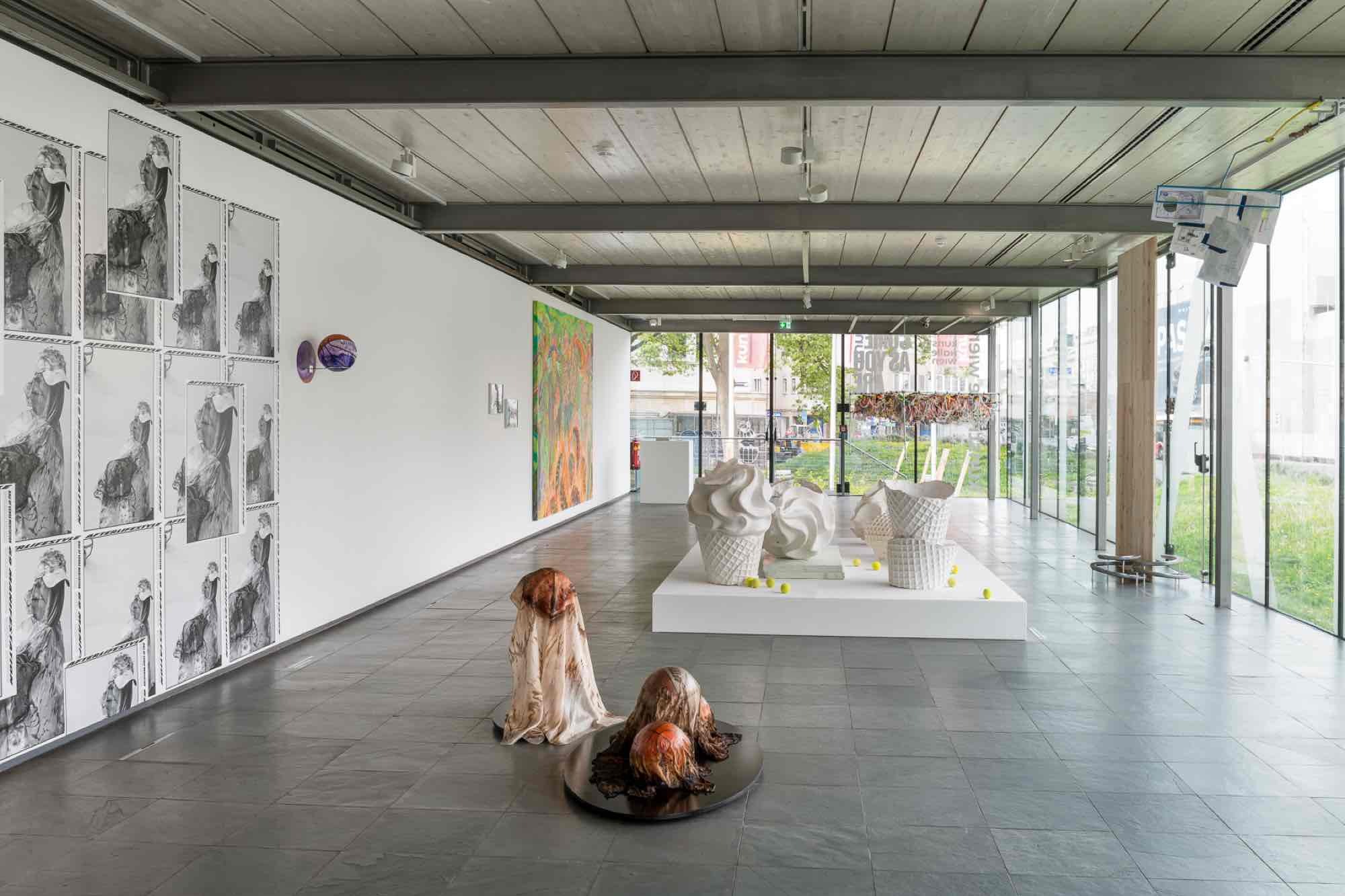
Installation view: Come as You Are. Kunsthalle Wien Prize 2023, Kunsthalle Wien 2024, photo: Klaus Pichler
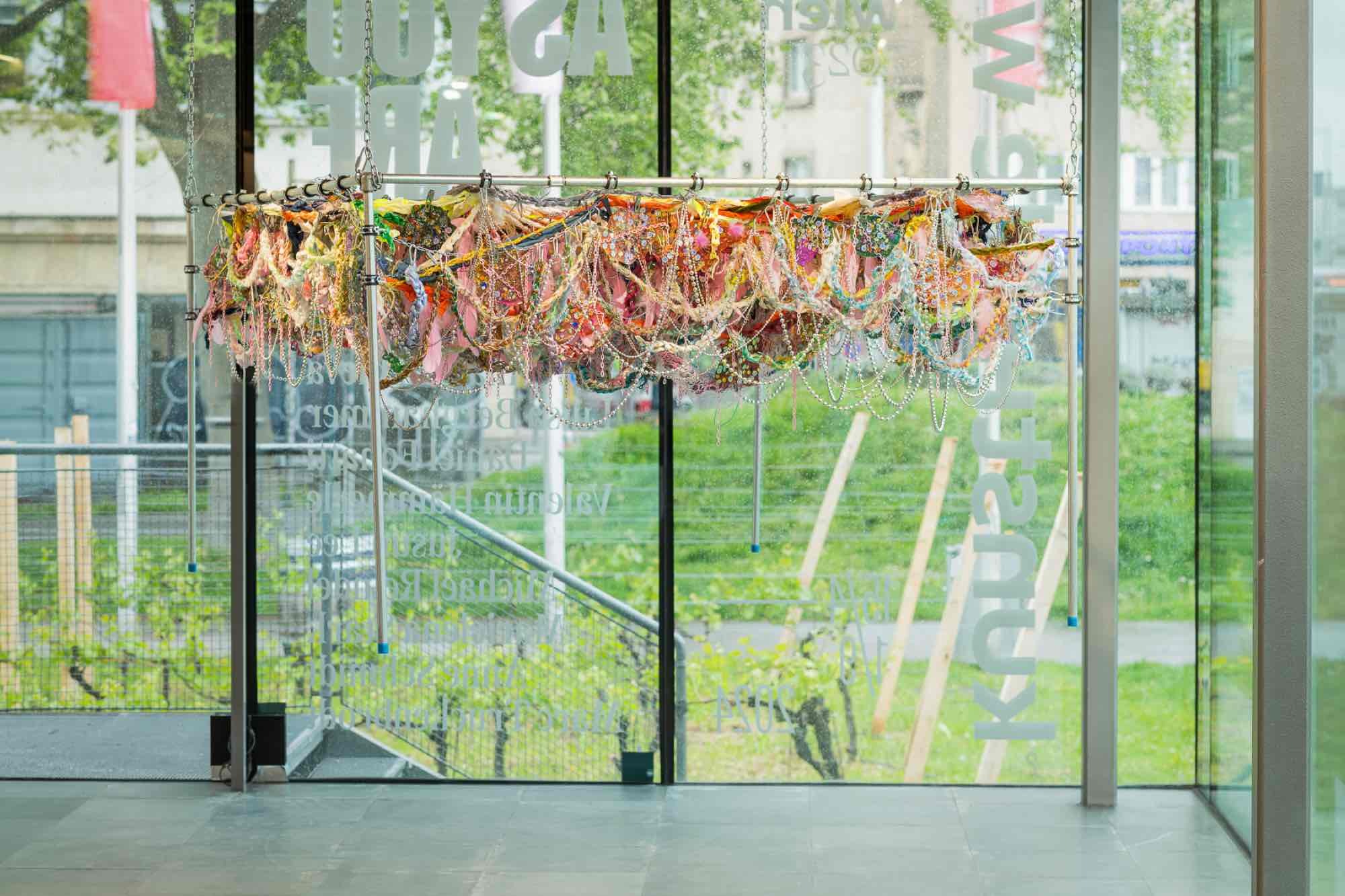
Installation view: Come as You Are. Kunsthalle Wien Prize 2023: Jusun Lee, Dreamtime, 2024, Kunsthalle Wien 2024, photo: Klaus Pichler

Installation view: Come as You Are. Kunsthalle Wien Prize 2023: Marielena Stark, Afterlifestyle, 2023, Kunsthalle Wien 2024, photo: Klaus Pichler
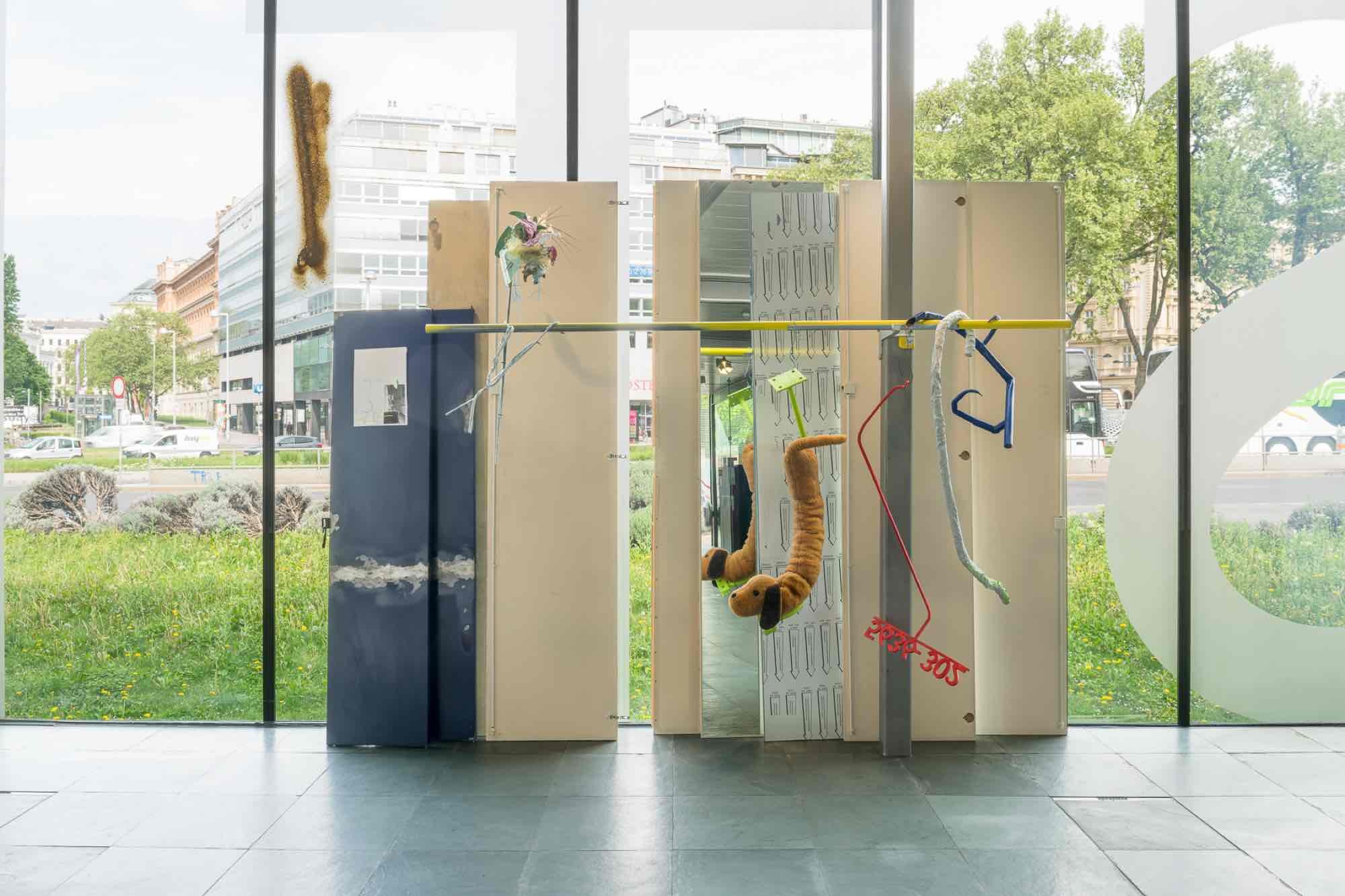
Installation view: Come as You Are. Kunsthalle Wien Prize 2023: Michael Reindel, inventory performance index*, 2024, Kunsthalle Wien 2024, photo: Klaus Pichler
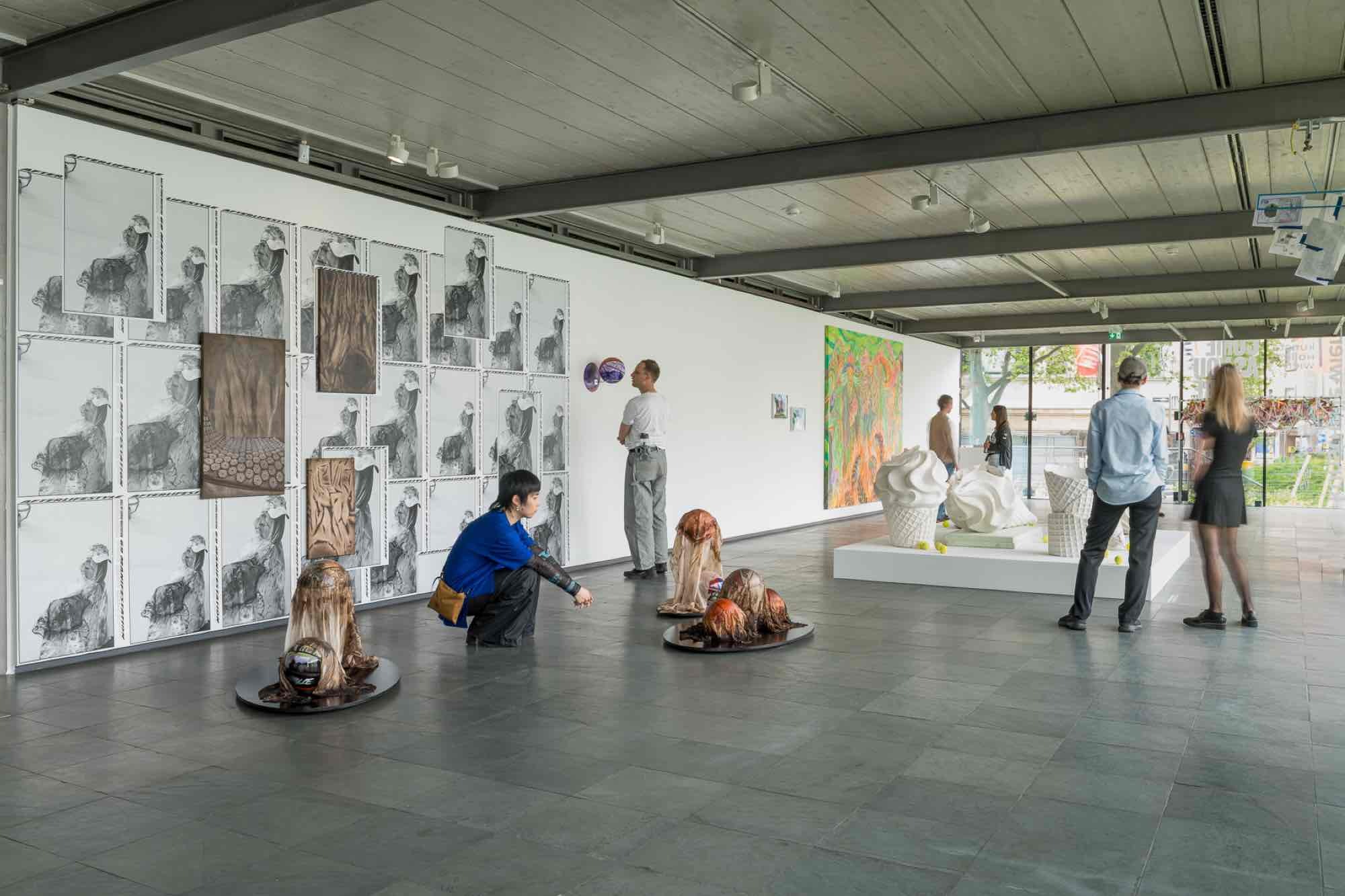
Installation view: Come as You Are. Kunsthalle Wien Prize 2023, Kunsthalle Wien 2024, photo: Klaus Pichler
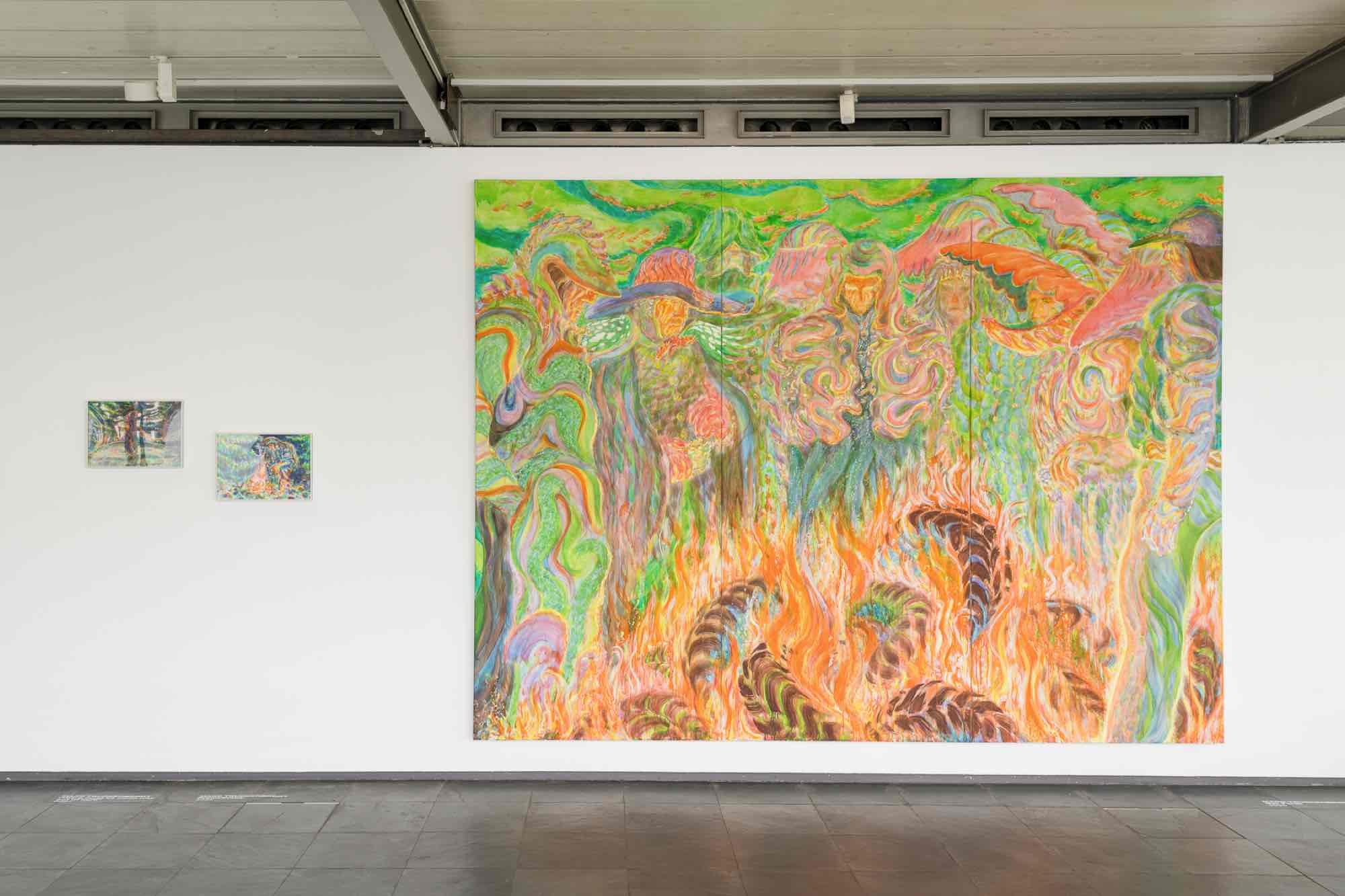
Installation view: Come as You Are. Kunsthalle Wien Prize 2023, Marc Truckenbrodt, Der Fürst [The Prince], 2024, Prometheus, 2024, “There must be some way out of here”, 2024, Kunsthalle Wien 2024, photo: Klaus Pichler

Installation view: Come as You Are. Kunsthalle Wien Prize 2023: Anne Schmidt, Strahlte, Geschöpf, Champagner, zottig, Klumpen [Radiated, creature, champagne, shaggy, lump], 2023, Kunsthalle Wien 2024, photo: Klaus Pichler
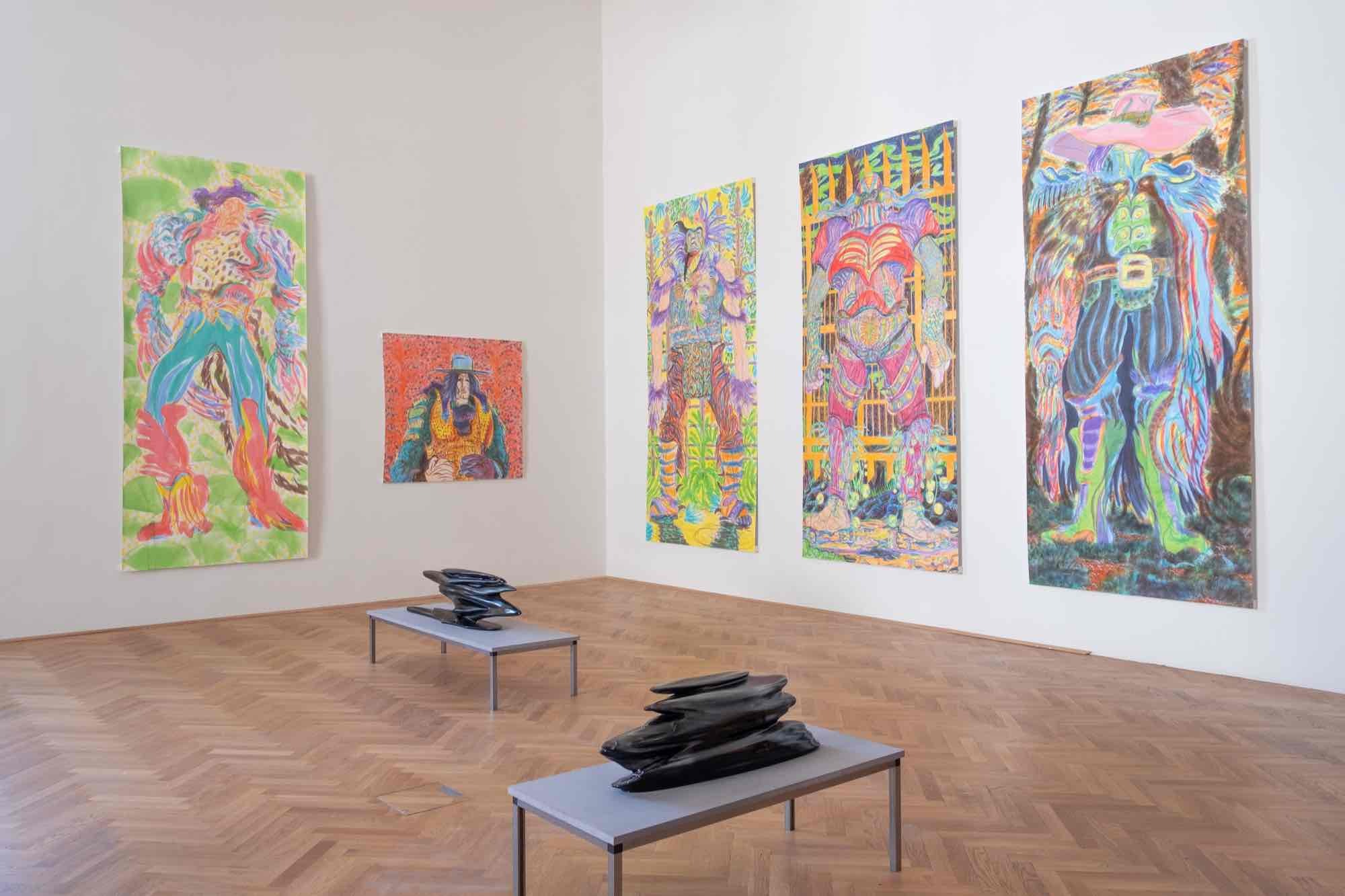
Marc Truckenbrodt, Behauptung [Assertion], 2023, installation view Exhibit, Academy of Fine Arts Vienna (in the foreground sculptural works by Dean Maaßen), photo: Simon Larsen
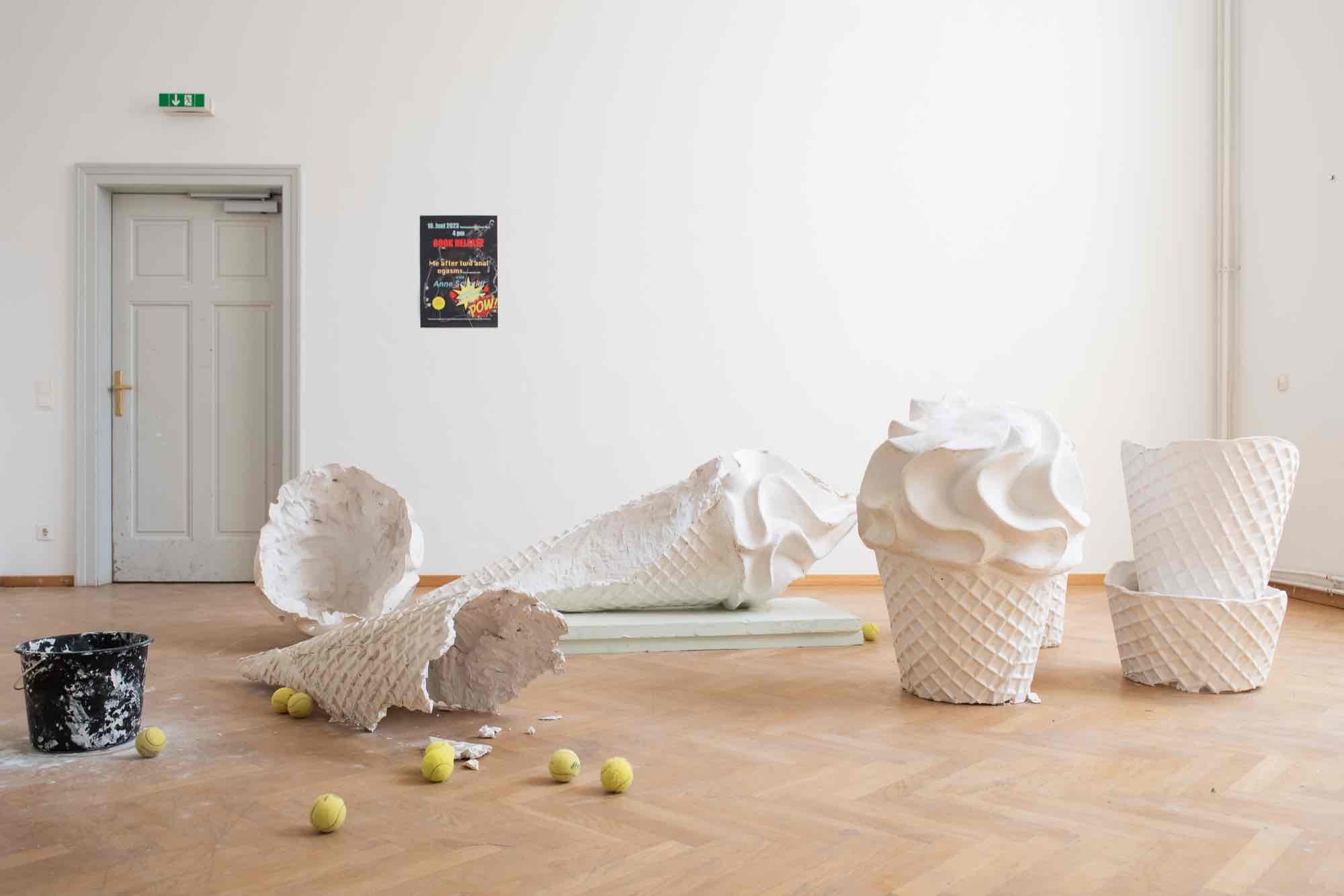
Anne Schmidt, Strahlte. Geschöpf. Champagner. zottig. Klumpen [Radiated, creature, champagne, shaggy, lump], 2023, installation view, photo: eSeL.at – Joanna Pianka

Installation view: Come as You Are. Kunsthalle Wien Prize 2023, Kunsthalle Wien 2024, photo: Klaus Pichler
Curator Astrid Peterle
Artists: Željka Aleksić • Mila Balzhieva • Luisa Berghammer • Daniel Fonatti • Valentin Hämmerle • Jusun Lee • Michael Reindel • Anne Schmidt • Marielena Stark • Marc Truckenbrodt
Come as You Are—this exhibition title is simultaneously an invitation and instruction, an opportunity and restriction, a promise and challenge. The exhibition is conceived as an institutional megaphone for the artists and their individual objectives, which find expression in their works. The title of the exhibition also reflects the polyphony of artistic voices and formats. Artists and audience are invited to contemplate the ambivalence of our present together, for example between the chronic urgency and simultaneous desire for deceleration—or as Nirvana sang it back in 1991: “Take your time, hurry up.”
Curating is a form of care, a practice of respectful, appreciative exchange with artists, but also care for the audience and the themes being conveyed. Entering into a curatorial dialogue with artists at a public institution means to support and enable them to develop their practice within a framework that adheres to specific rules that can sometimes be perceived as constraints. “Come as you are” is our invitation, a warm welcome. It might just as well be “Come almost as you are”—because institutional “welcome culture” is not always seamlessly compatible with the freedom and inviolable integrity of artistic creativity. Not everything is feasible in an institutional context, not everything can be enabled in a public space that functions according to specific regulations and procedures, a necessary bureaucracy, and official requirements. Hence, the task of curatorial care is also to balance wanting to enable and being able to enable.
The ten artists are in a transition phase, between art university and independent activities in the professional art field. For most of them, Come as You Are is their first experience exhibiting in a larger institutional environment outside of their educational setting. They were invited to adapt their prize-winning thesis projects or, in turn, encouraged them to consider their works as completed and to develop new ones. We approached them with a curatorial curiosity to learn how the artists desired to express their respective practices in this specific framework and context, to try out new things or continue thinking about existing interests. In many of the exhibited positions, there is a high degree of self-reflexivity, being an artist in a turbulent present, under precarious working conditions generally associated with the decision to become a professional artist. This is where ambivalence resurfaces, between desire and realization, between a consciously chosen lack of alternatives and pragmatism in light of existential necessities. Not accepting this ambivalence but making it the focus of artistic exploration, reflecting on social circumstances and limitations experienced—these intentions can be identified in the work of the artists in this phase of transition.
Artists: Željka Aleksić • Mila Balzhieva • Luisa Berghammer • Daniel Fonatti • Valentin Hämmerle • Jusun Lee • Michael Reindel • Anne Schmidt • Marielena Stark • Marc Truckenbrodt
Come as You Are—this exhibition title is simultaneously an invitation and instruction, an opportunity and restriction, a promise and challenge. The exhibition is conceived as an institutional megaphone for the artists and their individual objectives, which find expression in their works. The title of the exhibition also reflects the polyphony of artistic voices and formats. Artists and audience are invited to contemplate the ambivalence of our present together, for example between the chronic urgency and simultaneous desire for deceleration—or as Nirvana sang it back in 1991: “Take your time, hurry up.”
Curating is a form of care, a practice of respectful, appreciative exchange with artists, but also care for the audience and the themes being conveyed. Entering into a curatorial dialogue with artists at a public institution means to support and enable them to develop their practice within a framework that adheres to specific rules that can sometimes be perceived as constraints. “Come as you are” is our invitation, a warm welcome. It might just as well be “Come almost as you are”—because institutional “welcome culture” is not always seamlessly compatible with the freedom and inviolable integrity of artistic creativity. Not everything is feasible in an institutional context, not everything can be enabled in a public space that functions according to specific regulations and procedures, a necessary bureaucracy, and official requirements. Hence, the task of curatorial care is also to balance wanting to enable and being able to enable.
The ten artists are in a transition phase, between art university and independent activities in the professional art field. For most of them, Come as You Are is their first experience exhibiting in a larger institutional environment outside of their educational setting. They were invited to adapt their prize-winning thesis projects or, in turn, encouraged them to consider their works as completed and to develop new ones. We approached them with a curatorial curiosity to learn how the artists desired to express their respective practices in this specific framework and context, to try out new things or continue thinking about existing interests. In many of the exhibited positions, there is a high degree of self-reflexivity, being an artist in a turbulent present, under precarious working conditions generally associated with the decision to become a professional artist. This is where ambivalence resurfaces, between desire and realization, between a consciously chosen lack of alternatives and pragmatism in light of existential necessities. Not accepting this ambivalence but making it the focus of artistic exploration, reflecting on social circumstances and limitations experienced—these intentions can be identified in the work of the artists in this phase of transition.
